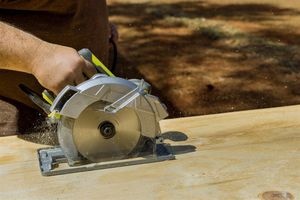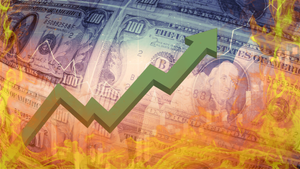-- PW Consulting released a comprehensive research report that offers a deep dive into the evolving landscape of the Aerial Drone Cleaning Service Market. This publication reflects rigorous market analysis, technological trends, and business dynamics, meticulously compiled for industry stakeholders, investors, solution providers, and public sector decision-makers interested in the intersection of advanced unmanned aerial vehicles (UAVs) and commercial cleaning applications.
The report commences by establishing a clear understanding of the Aerial Drone Cleaning Service segment, tracing the origin of drone cleaning innovations and their subsequent adoption in various sectors. PW Consulting’s analysts map out the journey from traditional manual cleaning methods to today’s advanced drone-enabled solutions, highlighting the transformative impact that automation and aerial robotics have ushered in, especially within urban and industrial settings where access and efficiency are of paramount concern.
One of the initial chapters documents the technological underpinnings unique to drone cleaning services. The segment details hardware advancements, such as lightweight composite materials, modular payloads, and precise stabilization mechanisms, which enable drones to handle cleaning fluids and brushes for diverse surface types. Recent improvements in battery life, high-precision GPS systems, and real-time obstacle avoidance are cited as key contributors to operational safety and cost-effectiveness. In addition, the report explores the rise of specialized software solutions that manage flight paths, monitor cleaning coverage, and generate compliance reports—features vital for service standardization and quality assurance across commercial portfolios.
PW Consulting’s study further delves into a detailed assessment of target application areas for drone cleaning, ranging across solar panels, hotel and office exteriors, skyscraper facades, commercial signage, and even critical infrastructure such as wind turbines and communication towers. The research delineates use-case scenarios, each supported by industry testimonials and data-driven performance metrics. For instance, expert interviews suggest that drone cleaning can reduce total labor hours by upwards of 50% for multi-story building facades, while simultaneously mitigating worker risks associated with high-altitude tasks.
Stainless Steel Watertight Hatches Market
Regional dynamics form a major component of the report’s analysis, where market adoption rates, regulatory environments, and urbanization trends are thoroughly investigated. The researchers discuss North America’s regulatory progress—reflected in the FAA’s ongoing updates to Part 107 rules—and compare this to the evolving landscape in Europe, where the EASA’s frameworks enable broader operations for commercial drone services. Attention is given to Asia-Pacific cities, where rapid infrastructure growth creates strong demand for efficient cleaning solutions. According to interviews conducted with local operators in metropolitan China and Singapore, increasing acceptance from property management firms and government offices has spurred innovative partnerships between tech startups and construction giants.
Industry structure and competitive landscape are core sections in PW Consulting’s report. The analysis spotlights key service providers, startup entrants, and strategic alliances, dissecting business models, pricing strategies, and contractual norms. Drone cleaning service providers are shown to typically offer tiered packages, ranging from basic facade washing to premium treatments for solar arrays, all leveraging remote monitoring technologies. The report tracks merger and acquisition activity, joint ventures, and licensing agreements that are shaping the market’s path to maturity. Detailed case studies provide insight into how market leaders are scaling their services by recruiting skilled pilots, investing in proprietary drone fleets, and optimizing maintenance protocols.
The report further explores driving forces and constraints impacting the Aerial Drone Cleaning Service Market. Favorable environmental regulations, increasing demand for sustainable facility management, and new mandates for green building certifications are presented as catalysts for drone cleaning adoption. On the flip side, operational limitations such as payload restrictions, weather dependency, and insurance liabilities are identified as challenges that innovators are actively seeking to resolve, as detailed by several technical experts interviewed for the study.
An extensive review of customer adoption trends is included, informed by survey data from facility managers, industrial operators, and real estate developers. The report notes a shift in preference from manual cleaning vendors to tech-enabled drone solutions, chiefly driven by measurable improvements in speed, consistency, and safety. Furthermore, the report analyzes feedback on integration challenges, such as compatibility with existing building management systems and requirements for third-party quality audits. PW Consulting’s findings reveal that as awareness grows, more clients are making drone cleaning a staple in annual maintenance contracts, particularly for high-value assets.
A noteworthy chapter examines ongoing innovations within drone cleaning technology. The researchers outline advancements such as washable sensors for real-time dirt detection, AI-driven flight control that adapts to various architectural features, and eco-friendly cleaning agents compatible with drone dispersal systems. Startups specializing in software engineering are showcased for their contribution to predictive maintenance alerts, while hardware manufacturers are celebrated for reducing overall drone weight and noise profiles, a key consideration near hospitals and schools.
PW Consulting’s research also pays close attention to the regulatory environment shaping the future of aerial drone cleaning services. Detailed charts summarize certification processes, operator licensing requirements, and data privacy protocols governing airborne sensor use. The report identifies market hotspots where government grants and pilot programs have accelerated the deployment of cleaning drones, referencing municipal contracts awarded for infrastructure cleaning in major cities over the past year.
The supply chain and logistics segment provides a granular view of drone procurement channels, maintenance cycles, battery management systems, and sourcing for biodegradable cleaning consumables. Analysts discuss the role of OEMs, third-party logistics providers, and value-added resellers in ensuring operational continuity for drone cleaning service operators. Projections for risk mitigation strategies—such as redundancy in fleet management and emergency landing protocols—are evaluated as part of broader business continuity planning.
Human capital and workforce trends are not overlooked by PW Consulting’s report. Chapters are dedicated to profiling drone operator training programs, certification courses, and apprenticeship initiatives led by associations and technical colleges. The study highlights the rise of a new professional cohort, the “drone cleaning technician,” equipped with both flight skills and maintenance expertise, and discusses the increased role of women in STEM positions within the drone industry, driven by supportive hiring frameworks.
Worldwide Anti-Fog Face Shield Film Market Research Report 2025, Forecast to 2031
Emerging business models receive significant focus, as the report investigates not only direct service contracts but also “drones-as-a-service” models. Subscription-based offerings and pay-per-use platforms are dissected for their potential to power rapid market expansion and lower barriers to entry for small cleaning operators. The impact of remote diagnostics, self-service scheduling apps, and customer-facing dashboards is appraised as part of the ongoing digital transformation sweeping through the sector.
Sustainability is given special emphasis with a dedicated analysis of the environmental footprint of drone cleaning operations. Lifecycle assessments compare drone solutions against traditional methods in terms of water usage, chemical runoff, carbon emissions, and landfill impacts from disposables. The report integrates insights from green building consultants who affirm that drone cleaning often meets LEED and BREEAM certification standards, especially when bundled with solvent-free agents and smart water recycling technologies.
PW Consulting’s report incorporates quantitative and qualitative tools throughout its chapters, such as SWOT analysis, driver mapping, and scenario-based forecasting. Benchmarking against adjacent markets—including industrial painting by drones and agricultural spraying—provides context for the unique strengths and vulnerabilities of aerial cleaning as a commercial service. The methodology section explains how primary data from operator interviews, user surveys, and field trials enriches the proprietary datasets, ensuring the reliability and depth of the market intelligence presented.
Contact Info:
Name: Lacy Lee
Email: Send Email
Organization: https://pmarketresearch.com/
Website: https://pmarketresearch.com/it/aerial-drone-cleaning-service-market
Release ID: 89171894
Should any errors, concerns, or inconsistencies arise from the content provided in this press release that require attention or if a press release needs to be taken down, we kindly request that you immediately contact us at error@releasecontact.com (it is important to note that this email is the authorized channel for such matters, sending multiple emails to multiple addresses does not necessarily help expedite your request). Our efficient team will be at your disposal for timely assistance within 8 hours – taking necessary measures to rectify identified issues or providing guidance on the removal process. We prioritize delivering accurate and reliable information.






